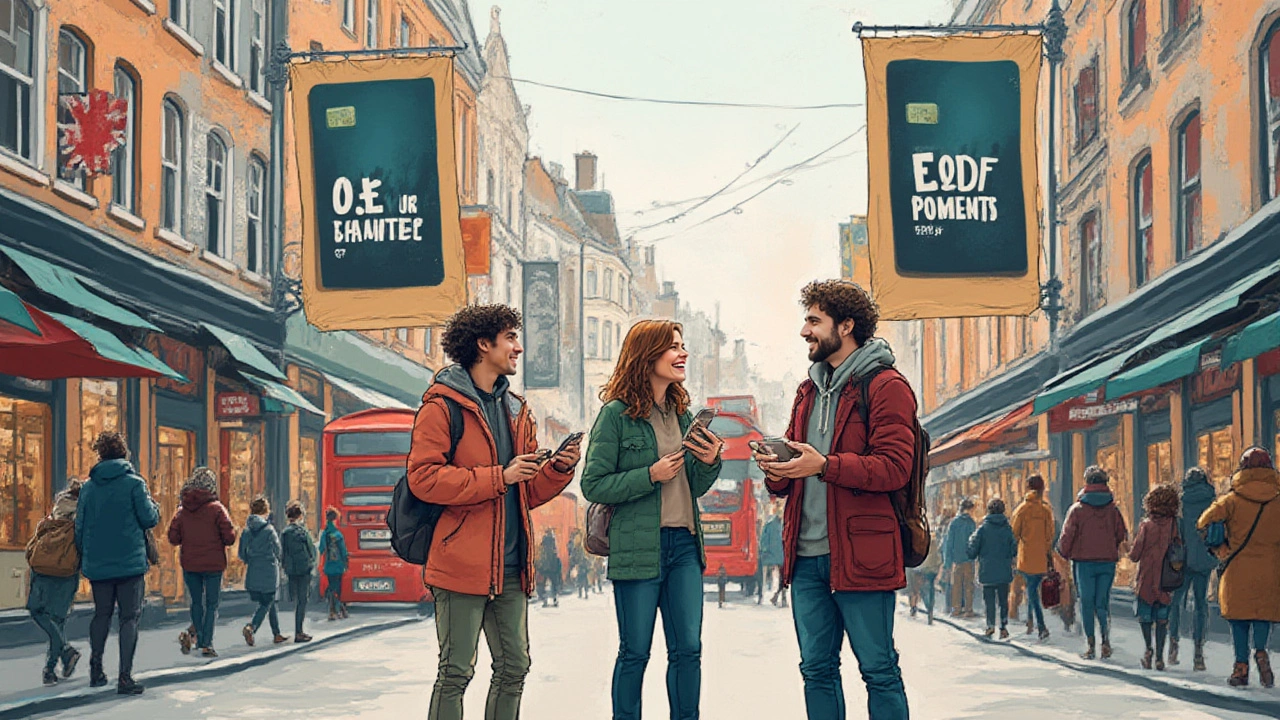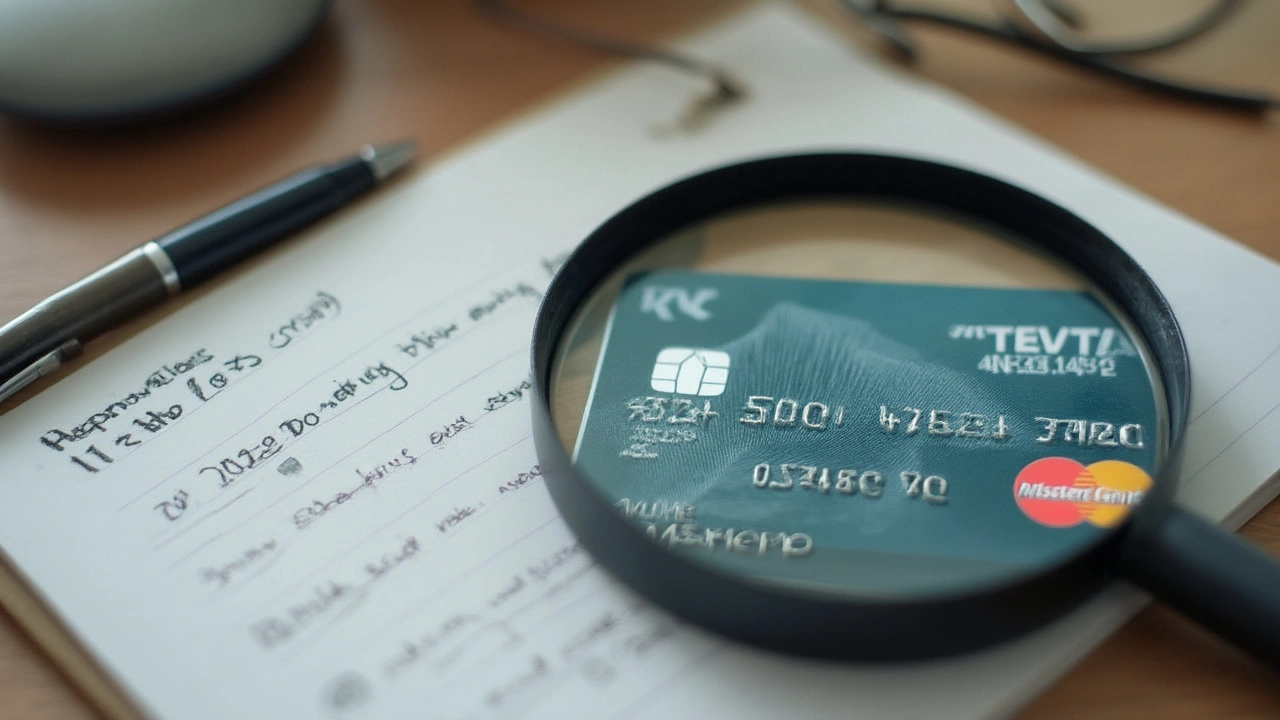Best APR Credit Card Rates: How to Spot a Good Deal & Why It Matters
 Jul, 5 2025
Jul, 5 2025
Ever wonder why your credit card statement always seems to sneak up on you, with interest charges lurking after every purchase you don't pay off right away? Here's the cold truth: a lot more people lose money to high credit card APRs than from just splurging on stuff they don’t need. And those tiny numbers next to 'APR' can cost you hundreds or even thousands every year if you don’t pay attention. That's why it pays—literally—to know what a good APR is, what it means, and how to make credit cards work in your favor, instead of the other way around.
What Does APR Mean and Why Should You Care?
APR stands for Annual Percentage Rate, but let’s keep it real—no one thinks in 'annual' terms when pulling out their card for that last-minute coffee or online deal. APR is how much interest you’ll pay on your balance over a year if you don’t pay your bill in full. But it’s more than just a number—it’s the price tag the bank slaps on your debt. If you’ve ever paid attention to your bill and thought, “Wait, why do I owe more than I spent?”—that’s your APR at work.
Here’s something wild: in early 2025, the average credit card APR in Canada is hovering around 21.5%. That’s higher than it was even a few years ago, thanks to the Bank of Canada hiking rates several times to battle inflation. If you have a balance of $2,000 and only pay the minimum each month, you could fork over hundreds in interest alone within a year. And that interest doesn’t sleep—it compounds, quietly ballooning your debt until you finally tackle it head-on.
Banks don’t hand out just one APR, either. There’s the regular purchase APR, cash advance APR (usually even higher), and sometimes a penalty APR if you miss payments. Each is lurking in your cardholder agreement—if you can find the fine print. And here’s a kicker: the average penalty APR is over 29% right now. Ouch. Even a single missed payment can make your life more expensive for months.
| Type of APR | Average Rate in 2025 (Canada) |
|---|---|
| Regular Purchase APR | 21.5% |
| Cash Advance APR | 24.8% |
| Penalty APR | 29.9% |
So what’s considered a good APR for a credit card these days? Most experts point to anything under 19% as solid. If you’ve got excellent credit, you might even snag an APR around the 13–15% range. That said, not all cards offer the same rates, and the ones with the lowest APR usually skimp on flashy rewards. Kind of a trade-off: lower rates or better perks. If you’re like Serena and love maximizing rewards on every purchase, you might pay a touch more for that privilege.
What many folks don’t realize: credit card interest is more expensive than most other common kinds of debt—car loans, personal loans, lines of credit. Think of your credit card as a short-term tool, not a place to park debt long-term, unless you score one of those coveted 0% intro offers (but more on those in a bit). Here’s a way to put it in everyday terms: that $80 dinner you charged to your card in January could still be haunting you in June—now costing closer to $100, thanks to compounding interest.

How Credit Card Companies Choose Your APR
Most folks think APR is just handed out by the bank, but it’s actually based on your credit profile, the type of card you choose, and the wider economy. If you have bad or fair credit, you’ll get stuck with a higher APR—sometimes even 25–30%. On the other hand, if your credit is strong (think scores above 750), you’ll likely qualify for the lower end of the spectrum. But there’s more to the story than just your score.
Banks use something called risk-based pricing. It means they look at how reliable you are with money—your income, your payment history, your spending patterns, even how often you open new accounts. If you look like someone who might leave a balance and pay tons of interest, you’re getting the bigger rate. Strange, right? In some cases, having a low credit utilization (using less than 30% of your credit limits) can help you get a better offer. I remember when Serena applied for a card last year, she paid off an old balance and watched her score jump by nearly 40 points. Her reward? A promo offer with a 14.89% APR—proof it pays to manage your balance before applying.
This is where card type matters, too. Platinum and travel rewards cards often charge higher APRs—banks gamble that people want the perks so badly they’ll pay for it. Student cards and secured cards usually tack on even heftier rates to offset the bigger risk of lending to newbies or rebuilding borrowers. Oddly, some credit unions in Ontario still offer classic cards around 12–14%. It’s old-school, but they don’t advertise it much. The catch? You're unlikely to get killer rewards or fancy features. Here’s a snapshot of today’s rates you might see:
| Credit Card Type | Average APR (2025) |
|---|---|
| Basic/Classic | 15–19% |
| Rewards/Premium | 19–23% |
| Secured/Student | 22–29% |
Beware of those glittery 0% intro APR offers. Banks aren’t being generous—they’re betting you’ll slip up and leave a balance when the teaser ends. That’s when your remaining debt balloons to the regular APR, which could be 20% or more. Always check how long the intro rate lasts and what happens after. A lot of people get tripped up right when the clock runs out, stuck with hefty interest. Here’s a tip: set a reminder a month before that teaser ends, and pay down as much as possible before the rate jumps.
Another sneaky move: balance transfer offers. These let you shift high-interest debt to a new card with a lower APR (sometimes 0%), buying you some breathing room. But transfer fees (often 1–3% of the amount moved) and the post-intro APR can add up quickly. Only do this if you have a clear plan to kill the balance before the promo ends.

Smart Ways to Use APR to Your Advantage
There’s no getting rid of interest altogether—unless you pay your bill off in full every month. But you can absolutely cut how much you fork over, and maybe even score a better deal. Here’s the toolkit I use, battle tested in real life here in Toronto.
- Know your rates: Not all purchases are treated equally. That cash advance you took at the concert? It probably costs you more than any regular purchase. Always check what that extra trip to the ATM is really setting you back.
- Set up autopay: Life gets busy. If you miss a payment, your APR could shoot up. Set minimum payments to autopay, if nothing else—it gives you a safety net.
- Comparison shop before you apply: Websites like Ratehub and NerdWallet regularly list the best rates available in Canada. Don’t grab the shiniest card—find what fits your needs, whether it's a lower rate, better rewards, or a sweet intro promo.
- Negotiate with your lender: Yes, you can just call and ask. If your credit score has improved or if you’re a longtime, loyal customer, banks sometimes knock your APR down by a point or two. It takes a five-minute phone call. Worst case, they say 'no.'
- Clear balances early: Since credit card interest is calculated daily, every day you leave a balance is money gone. If you get paid biweekly, you don’t have to wait for the statement date—throw extra cash at your card as soon as you can.
- Read the fine print: Don’t let banks trip you up with hidden charges or penalty rates. Know what triggers a higher APR, and steer clear.
It always blows my mind how many people leave money on the table by carrying balances month after month. I once showed a friend his annual interest payments, and he stared at his phone, jaw to the floor. He gave up buying lunch out for a month, paid off his card, and kept it at zero. Sometimes it just takes seeing the real numbers to make a change.
Speaking of numbers, did you know a 2023 study from the Financial Consumer Agency of Canada found about 46% of credit card holders carry a balance each month? That’s nearly half the country paying extra for the privilege of borrowing. By 2025, the number hasn’t budged much, especially as living costs stay high. And with average balances up to $3,255, you don’t want to be paying the bank more than you have to.
If you’re hunting for a new card right now, shoot for a purchase APR below 19%. If all you get is 20%+, consider cards from credit unions or smaller banks, which sometimes offer better deals to attract new customers. And if you’re in rebuilding mode, look for secured cards with the lowest possible rates—don’t just grab the first offer that pops up in your feed.
At the end of the day, the “good” APR is the one that minimizes what you owe and matches how you use your card. If you pay off your balance in full every cycle, you could carry a 28% APR and it’d never cost you a penny in interest. But let’s be honest: most of us slip up once in a while, or use credit as a cushion during tight months. That’s when knowing your rate, reading the fine print, and shopping for a better deal really matter. The difference between a 14% and 22% APR over time? That’s a few extra nice meals out in the city with someone you love, instead of another line on your bank’s profit report.
